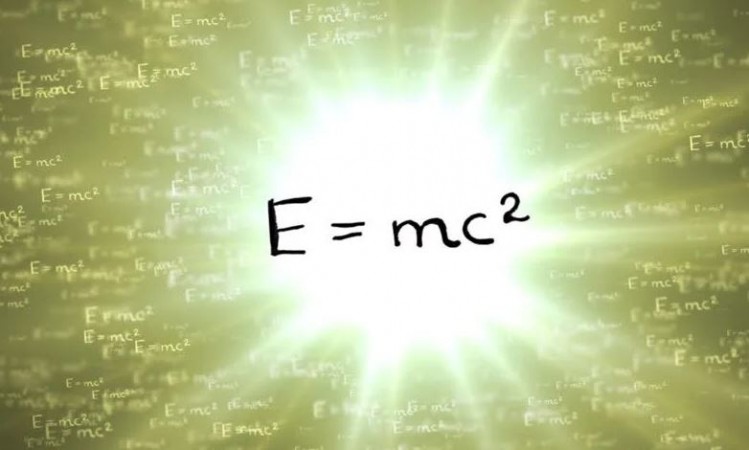
In the realm of physics, few theories have had as profound an impact as Albert Einstein's General Theory of Relativity. Introduced in 1915, this revolutionary theory completely transformed our understanding of gravity and spacetime. Prior to Einstein's work, Sir Isaac Newton's laws of motion and gravitation dominated the scientific landscape. However, as technology advanced and observational evidence accumulated, it became evident that Newtonian physics could not entirely explain certain phenomena. This led Einstein to embark on a groundbreaking journey that would change the face of modern physics forever.
Understanding Gravity: Newton's Laws
Before delving into the intricacies of General Relativity, it is essential to grasp the foundation laid by Sir Isaac Newton. According to Newton's laws of motion and universal gravitation, objects attract each other with a force proportional to their masses and inversely proportional to the square of the distance between them. While this framework served as an excellent approximation for everyday scenarios, it encountered limitations when addressing certain phenomena, such as the anomalous orbit of Mercury and the bending of light in the presence of massive celestial bodies.
The Need for a New Theory
The discrepancies between empirical observations and Newtonian predictions prompted the scientific community to seek a more comprehensive theory of gravity. Einstein, with his innate curiosity and visionary mindset, recognized the limitations of the prevailing physics and began working on an alternative framework that would incorporate both gravity and spacetime into a unified description.
Einstein's Path to General Relativity
Einstein's journey towards General Relativity was not an easy one. It involved years of intense contemplation, thought experiments, and complex mathematics. One of the crucial steps in his thought process was the concept of equivalence. He realized that being in a closed elevator under gravity would be indistinguishable from being in an accelerated elevator in free space. This idea of equivalence between gravitational forces and acceleration provided a critical clue in developing his theory.
Key Principles of General Relativity
Curvature of Spacetime
At the heart of General Relativity lies the notion that massive objects warp the fabric of spacetime itself. Imagine a heavy object placed on a rubber sheet; it bends the sheet, causing smaller objects to move along curved paths. Similarly, massive celestial bodies warp spacetime, and this curvature influences the motion of other objects in their vicinity.
Equivalence Principle
The Equivalence Principle states that the effects of gravity and acceleration are indistinguishable from one another. This principle forms a cornerstone of General Relativity and underlies its elegance and simplicity.
Gravity as Geodesics
Einstein described gravity not as a force, but as the natural motion of objects along the curved spacetime. Objects move along geodesics, which are the shortest paths in curved spacetime, influenced by the presence of massive objects.
Testing General Relativity
Einstein's theory made several bold predictions that differed significantly from Newtonian physics. Over the years, scientists conducted numerous experiments and observations to test the validity of General Relativity.
Gravitational Lensing
General Relativity predicts that massive objects can bend light as it passes near them. This phenomenon, known as gravitational lensing, has been observed and verified, providing compelling evidence for the theory.
Time Dilation
Another remarkable prediction of General Relativity is time dilation, where time moves differently in the presence of strong gravitational fields. Precise atomic clocks on Earth have shown minute time differences when compared to clocks on orbiting satellites.
Gravitational Waves
Einstein also theorized the existence of gravitational waves—ripples in spacetime caused by cataclysmic cosmic events. In recent years, the Laser Interferometer Gravitational-Wave Observatory (LIGO) has successfully detected these elusive waves, further confirming General Relativity's accuracy.
Impact and Legacy of General Relativity
The impact of General Relativity extends far beyond the realm of theoretical physics. It revolutionized our understanding of the universe, inspiring subsequent generations of physicists and cosmologists to explore the mysteries of spacetime, black holes, and the Big Bang.
Applications in Modern Science
The principles of General Relativity have found practical applications in modern science and technology. For instance, the accurate synchronization of global positioning systems (GPS) relies on adjusting for the time dilation effects of Earth's gravity on orbiting satellites.
The Quest for a Unified Theory
While General Relativity explains gravity on a large scale, it remains incompatible with the other fundamental force of nature—quantum mechanics. The quest for a unified theory, often referred to as the Theory of Everything, continues to captivate the minds of physicists worldwide.
Albert Einstein's General Theory of Relativity stands as a masterpiece of human intellectual achievement. Its profound insights into the nature of gravity and spacetime have reshaped our understanding of the cosmos. From the bending of light around massive objects to the detection of gravitational waves, the theory has passed numerous rigorous tests, solidifying its place as one of the cornerstones of modern physics.
Harnessing Nature's Gifts: Exploring Modern Power Generation Alternatives
Sustainable Development: The Path to a Greener Future
Foreign Products and Technological Advancements: Navigating the Trade-offs